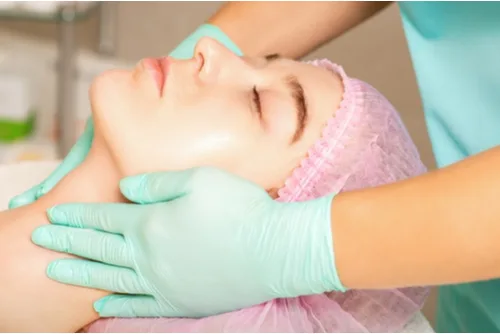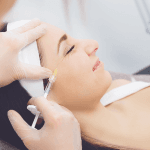Dealing with uneven texture, deep wrinkles, or acne scars can make anyone feel self-conscious. Many people turn to CO₂ laser treatment for smoother, younger-looking skin. This treatment delivers excellent results, but recovery requires patience and careful aftercare. For about one to two weeks after treatment, the skin remains highly sensitive. Knowing what to avoid during this period helps ensure proper healing and the best possible outcome.
Understanding the Recovery Process
CO₂ laser resurfacing creates tiny perforations in the skin’s surface to stimulate collagen and new cell growth. During this process, the protective barrier is temporarily disrupted, leaving the skin more vulnerable to infection and irritation.
In the first few days, the treated area may look and feel like a mild sunburn, with redness, swelling, and occasional itching. Healing progresses through several stages over roughly 10–14 days, during which consistent care and protection are vital.
Critical Activities to Avoid
1. Sun Exposure
Avoiding direct sunlight is essential until the skin has fully healed. Even brief exposure can increase the risk of burns or dark spots.
When going outdoors, use a broad-spectrum mineral sunscreen (SPF 30 or higher) and protective clothing such as hats or scarves. The U.S. Food & Drug Administration warns that laser-treated skin is more sensitive to UV radiation, making consistent sun protection a top priority.
2. Physical Activities
Exercise, hot yoga, saunas, and swimming should be postponed for at least a week after treatment. Activities that increase sweating or blood flow to the face can cause additional swelling and prolong recovery. Most providers recommend resuming light exercise after 7–10 days, depending on individual healing.
3. Harsh Skincare Products
Avoid exfoliants, scrubs, glycolic acid, retinol, alcohol-based toners, or any active treatments for at least the first week. These ingredients can cause irritation and interfere with the healing process.
Stick to gentle cleansers and doctor-recommended ointments until your provider confirms it is safe to resume your usual skincare routine.
4. Touching or Picking
Do not scratch or pick at peeling skin or crusts. Picking may cause scarring or infection. Let the skin shed naturally to allow new layers to form evenly. If itching becomes uncomfortable, apply a cool compress or consult your provider for a soothing product.
Common Complications to Watch For
Infection Risk
Although rare, infection remains a possible complication. Studies estimate infection rates of 4–8 % following CO₂ laser treatment when hygiene is not maintained. Watch for symptoms such as increased pain, yellow crusting, or pus between days 2 and 10. If these occur, contact your provider promptly for evaluation and antibiotics.
Pigmentation Changes
Hyperpigmentation (dark spots) may occur if the skin is exposed to UV rays too soon. People with darker skin tones are more prone to this reaction. Consistent sunscreen use and strict avoidance of tanning beds or direct sun minimize this risk.
Delayed Healing
Smoking, harsh topical products, or resuming workouts too soon can slow recovery and keep redness longer than normal. Nicotine reduces oxygen flow to healing tissue, so quitting smoking before and after treatment can improve results.
Essential Aftercare Practices
Cleansing
Clean the treated skin two to five times daily with saline or diluted vinegar solution, as directed by your provider. This removes debris without damaging the healing surface. Always use clean hands and avoid harsh rubbing.
Moisturizing
Keeping the skin continuously moist prevents scab formation and speeds recovery. Apply a non-fragranced occlusive ointment such as petrolatum or silicone gel. Adequate hydration supports new skin growth and minimizes redness.
Pain Relief
Discomfort usually peaks within the first three days and improves as inflammation decreases. Painkillers often manage mild pain and help reduce swelling. Always follow your provider’s recommendations.
When to Resume Normal Activities
Most patients can return to work within a week, though mild redness may persist for several weeks. Makeup is typically safe to apply once the skin has fully re-epithelialized, usually around days 10–14.
Full recovery, including fading of redness, can take one to four months, depending on skin type and overall health. Using vitamin C (ascorbic acid) serum and broad-spectrum sunscreen can help restore even tone during this period.
Long-Term Care and Prevention
Even after healing, ongoing protection remains essential. Daily sunscreen use, gentle skincare, and regular moisturizing help preserve results and prevent future damage. Avoid chemical peels or other aggressive treatments for at least six weeks unless cleared by your provider.
Conclusion
CO₂ laser treatment can dramatically rejuvenate the skin, but results depend on disciplined aftercare. Avoiding sun exposure, physical exertion, harsh skincare products, and touching healing skin ensures smoother recovery and longer-lasting benefits.
At Northwest Face & Body, patients receive personalized aftercare instructions and professional guidance at every stage of healing. To learn more about CO₂ laser resurfacing and begin a customized treatment plan, schedule a consultation today with their renowned plastic surgeons.
Read more:
Benefits Of Adding Laser Resurfacing To Facelift Surgery






